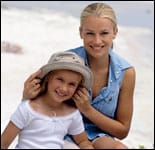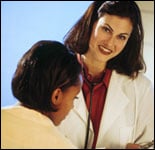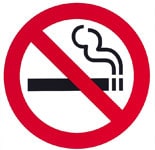
Stress can hit you when you least expect it—before a test, after an accident, or during conflict in a relationship. While everyone experiences stress at times, a prolonged bout of it can affect your health and ability to cope with life. That’s why social support and self-care are important. They can help you see your problems in perspective…and the stressful feelings ease up.
Sometimes stress can be good. For instance, it can help you develop skills needed to manage potentially threatening situations in life. However, stress can be harmful when it is severe enough to make you feel overwhelmed and out of control.
Strong emotions like fear, sadness, or other symptoms of depression are normal, as long as they are temporary and don’t interfere with daily activities. If these emotions last too long or cause other problems, it’s a different story.
Symptoms of Stress
Common reactions to a stressful event include:
- Disbelief and shock
- Tension and irritability
- Fear and anxiety about the future
- Difficulty making decisions
- Being numb to one’s feelings
- Loss of interest in normal activities
- Loss of appetite
- Nightmares and recurring thoughts about the event
- Anger
- Increased use of alcohol and drugs
- Sadness and other symptoms of depression
- Feeling powerless
- Crying
- Sleep problems
- Headaches, back pains, and stomach problems
- Trouble concentrating
The best ways to manage stress in hard times are through self-care:
- Avoid drugs and alcohol. They may seem to be a temporary fix to feel better, but in the long run they can create more problems and add to your stress—instead of take it away.
- Find support. Seek help from a partner, family member, friend, counselor, doctor, or clergyperson. Having a sympathetic, listening ear and sharing about your problems and stress really can lighten the burden.
- Connect socially. After a stressful event, it is easy isolate yourself. Make sure that you are spending time with loved ones. Consider planning fun activities with your partner, children, or friends.
- Take care of yourself.
- Eat a healthy, well-balanced diet
- Exercise regularly
- Get plenty of sleep
- Give yourself a break if you feel stressed out—for example, treat yourself to a therapeutic massage
- Maintain a normal routine
- Stay active. You can take your mind off your problems by giving—
helping a neighbor, volunteering in the community, even taking the dog on a long walk. These can be positive ways to channel your feelings.
Reference: www.cdc.gov
 Reduce your children's risk of getting many types of cancer later in life. Start by helping them adopt a healthy lifestyle with good eating habits and plenty of exercise to keep a healthy weight. Then follow the tips below to help prevent specific types of cancer.
Reduce your children's risk of getting many types of cancer later in life. Start by helping them adopt a healthy lifestyle with good eating habits and plenty of exercise to keep a healthy weight. Then follow the tips below to help prevent specific types of cancer. Most skin cancers can be prevented if children and teens (and adults, too) are protected from ultraviolet (UV) rays.
Most skin cancers can be prevented if children and teens (and adults, too) are protected from ultraviolet (UV) rays. Human papillomavirus (HPV), a common virus that can be passed from one person to another during sex, is the main cause of cervical cancer. The same virus also is linked with many vaginal, vulvar, penile, anal, and oropharyngeal cancers.
Human papillomavirus (HPV), a common virus that can be passed from one person to another during sex, is the main cause of cervical cancer. The same virus also is linked with many vaginal, vulvar, penile, anal, and oropharyngeal cancers. Smoking. Tobacco use is the major cause of lung cancer in the United States. The best way to prevent lung cancer is by never starting to smoke, or quitting if you do smoke. It is important to prevent adolescents from starting to smoke.
Smoking. Tobacco use is the major cause of lung cancer in the United States. The best way to prevent lung cancer is by never starting to smoke, or quitting if you do smoke. It is important to prevent adolescents from starting to smoke.





